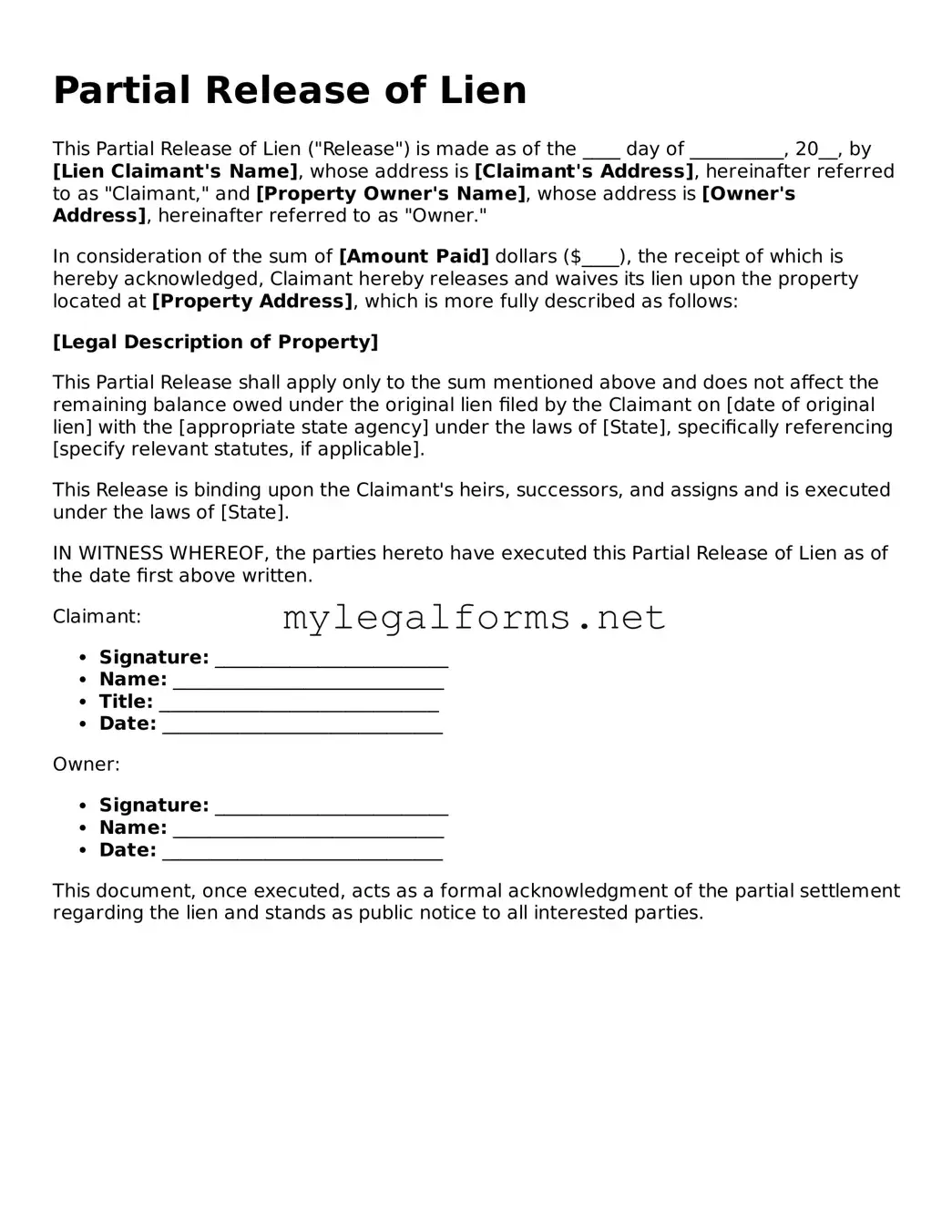Partial Release of Lien
This Partial Release of Lien ("Release") is made as of the ____ day of __________, 20__, by [Lien Claimant's Name], whose address is [Claimant's Address], hereinafter referred to as "Claimant," and [Property Owner's Name], whose address is [Owner's Address], hereinafter referred to as "Owner."
In consideration of the sum of [Amount Paid] dollars ($____), the receipt of which is hereby acknowledged, Claimant hereby releases and waives its lien upon the property located at [Property Address], which is more fully described as follows:
[Legal Description of Property]
This Partial Release shall apply only to the sum mentioned above and does not affect the remaining balance owed under the original lien filed by the Claimant on [date of original lien] with the [appropriate state agency] under the laws of [State], specifically referencing [specify relevant statutes, if applicable].
This Release is binding upon the Claimant's heirs, successors, and assigns and is executed under the laws of [State].
IN WITNESS WHEREOF, the parties hereto have executed this Partial Release of Lien as of the date first above written.
Claimant:
- Signature: _________________________
- Name: _____________________________
- Title: ______________________________
- Date: ______________________________
Owner:
- Signature: _________________________
- Name: _____________________________
- Date: ______________________________
This document, once executed, acts as a formal acknowledgment of the partial settlement regarding the lien and stands as public notice to all interested parties.
